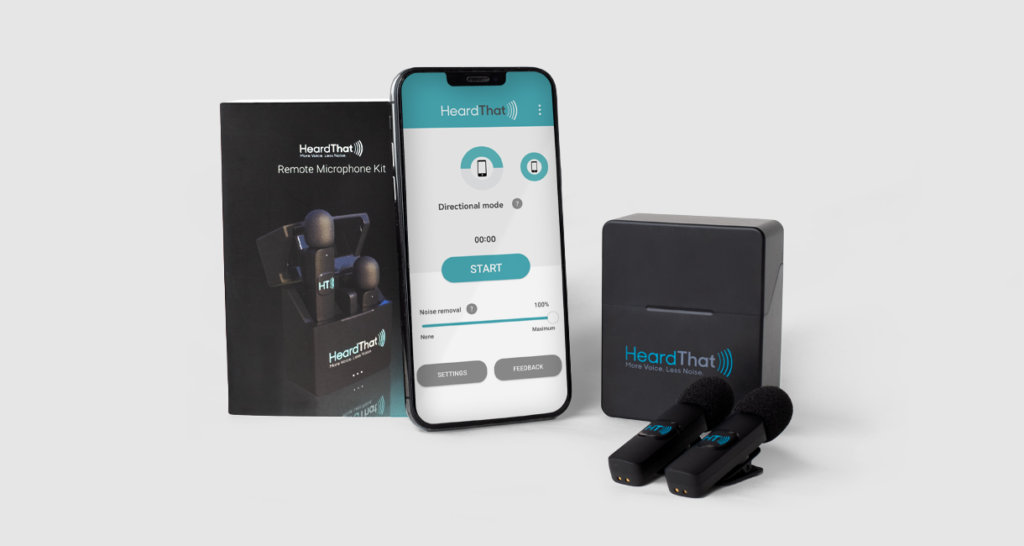A Breakthrough for Speech in Noise

As audiologists, you know the frustration your patients feel when they struggle to follow conversations in noisy environments. Now there is something new to offer them. HeardThat brings the power of artificial intelligence (AI) to address this perennial issue. It turns the user's smartphone into an intelligent remote microphone that separates speech from background noise. No new devices are required—HeardThat works with the devices that users already have.
The problem: listening effort in noise leads to avoidance
Whether chatting at a restaurant or participating in a busy family gathering, ambient noise makes it difficult to follow and participate in conversations. Often the effort is just too much and the response is to disengage, which leads people to become withdrawn and isolated. Traditional noise reduction technologies can only do so much and noise remains the most common complaint of those with hearing loss, whether they have hearing aids or not.

AI delivers a breakthrough
Recent advances in artificial intelligence have enabled computers to distinguish speech from noise more effectively than ever before.
HeardThat brings these advances to end users in a product that is effective, affordable, and easy-to-use. It is the result of training deep neural networks on thousands of hours of audio to learn the characteristics of speech versus noise. This creates algorithms with an unprecedented ability to know what is speech and what is noise, and the ability to separate them.
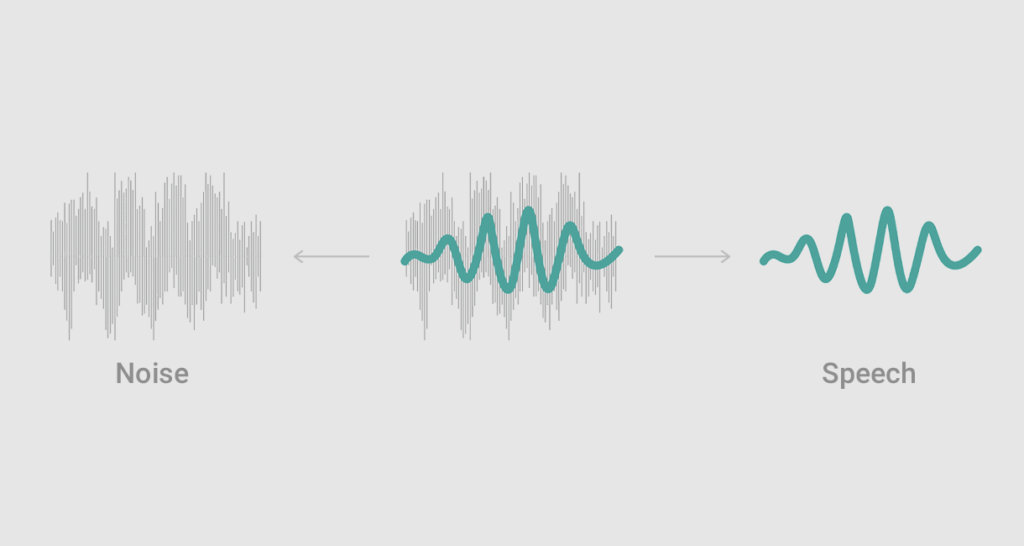
Smartphones can do what wearables can’t
All HeardThat processing is done on the phone, which sends the speech without the noise to the user’s ears. The app works with any listening device that connects to the phone, including hearing aids and cochlear implants that have Bluetooth streaming, and wired or wireless earbuds and headphones.
AI algorithms are powerful, but they need a lot of processing to run. Wearables lack the necessary processing power, memory, and battery life. Instead, HeardThat offloads the work to the user’s smartphone.
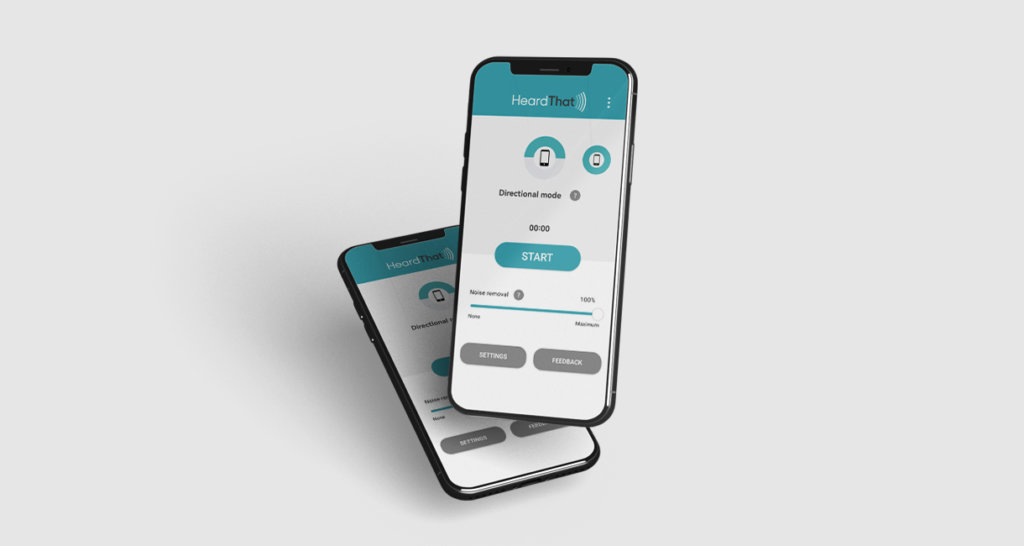
How HeardThat is used: an example
Here's how it works, for example, in a restaurant scenario. The user connects their listening device, opens the HeardThat app, presses the Start button, and lays the phone down on the table. The smartphone's microphone listens to ambient sounds and the AI model analyzes the audio in real-time to identify speech. Noise is suppressed while the speech signal is enhanced. The speech audio is then streamed to the user's listening device.
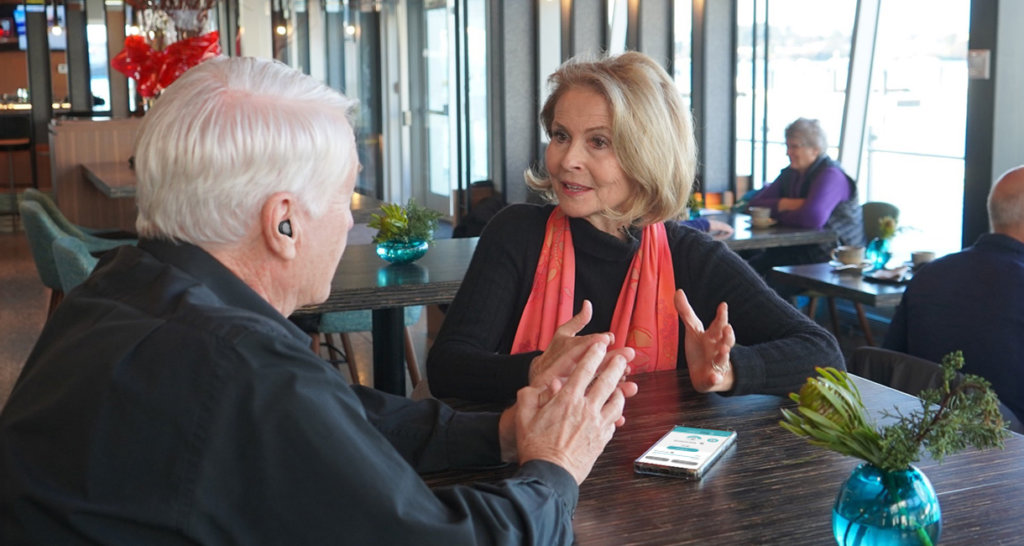
“I can hear your voice clearly with a lot less strain”
A quick way to appreciate what HeardThat can do is the interactive demo here.
HeardThat was developed in consultation with several key individuals who struggle with noisy environments. The quote above is from one of them. (See summary video here.) Hundreds of participants at trade shows and events have provided feedback from hands-on demos. The app has thousands of monthly active users and has been used close to a million times. That’s a lot of quieter conversations!
For many, it’s like flipping a switch on the background noise.
Independent testing by the Natural Sciences and Engineering Research Council (NSERC) of Canada, using industry-standard objective measures, confirmed HeardThat enhances speech intelligibility while reducing listening effort.
An efficacy study with human participants found that using HeardThat reduces errors in identifying words by 76% and sentences by 85% in real-world noisy environments. Listening effort was cut dramatically, reducing cognitive load to almost the level of a quiet environment.
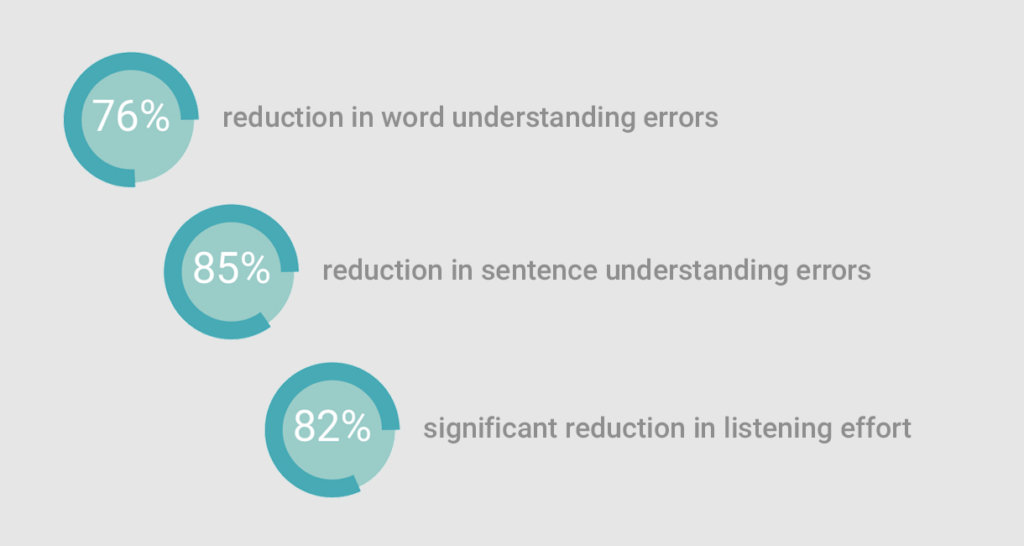
Remote Microphone Kit for additional use cases
To extend the reach of HeardThat to even more situations, there is the optional Remote Microphone Kit. This includes two wireless microphones and a receiver that plugs into the phone, all at an affordable price.
Place a mic near the sound source—whether a TV, lecture podium or family member in another room. The microphone gathers the sound signal close to the source and sends it to the phone. Combined with HeardThat's noise removal, the kit ensures clear, intelligible audio in a range of challenging environments.

Incorporate HeardThat into your practice
HeardThat delivers measurable benefits you can offer clients who struggle to communicate in noise. You are encouraged to join our Professional Program which provides you with free licenses and remote mic kits to use in your clinic, as well as priority access to technical support.
Membership is free. Visit this page to learn more. We hope you’ll join us to help more people get back in the conversation and stay connected.
